Seiichi Yoshida's Diary of Comet Observations (2011)
|
Japanese version Home page |
Updated on November 28, 2011 |
![]()
|
Go to Seiichi Yoshida's Diary of Comet Observations in 2012. |
![]()
|
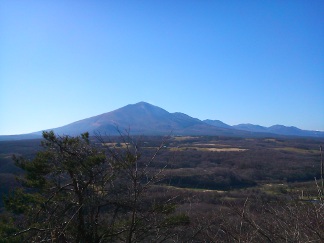 |
 |
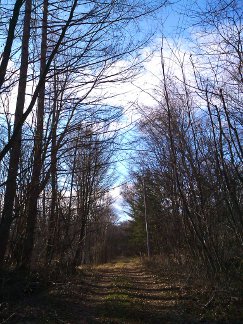 |
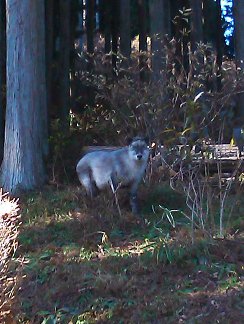 |
I observed 11 comets visually on Nov. 24 and 25 in Kita-karuizawa, Gunma, Japan.
On Nov. 24, we had light snow in daytime. My observations in the evening were through some clouds. But the sky became fine with no clouds after 22:00 (JST). Observation was comfortable all night, dry and not too cold.
On Nov. 25, the sky kept fine with no clouds from daytime through all night. But it was very cold.
C/2009 P1 ( Garradd )
Nov. 24 7.8 mag Dia. 7' DC 7 (40.0-cm reflector 36x)
Nov. 25 7.7 mag Dia. 7' DC 7-8 (40.0-cm reflector 36x)
Finally I could see it in good condition. It looks fine, very strongly condensend.
C/2010 G2 ( Hill )
Nov. 24 9.9 mag Dia. 7.2' DC 3 (40.0-cm reflector 36x)
Nov. 25 9.9 mag Dia. 6' DC 3 (40.0-cm reflector 36x)
Very large and diffuse as before.
C/2010 S1 ( LINEAR )
Nov. 24 13.6 mag Dia. 0.3' DC 6 (40.0-cm reflector 257x)
Nov. 25 13.6 mag Dia. 0.6' DC 6 (40.0-cm reflector 144x)
Small, but easy to see.
On Nov. 25, maybe I overestimated the diameter, because it located just beside a 13.6 mag star.
C/2010 X1 ( Elenin )
Nov. 24 fainter than 10.6 mag Dia. 4' (40.0-cm reflector 75x)
I assumed a very large diffuse object. Actually, it is very near by Pleiades and there are many bright stars. So the observation is very hard. Several 14 mag stars exist near by the position, which affected as something diffuse exists. Therefore, if the remnant of the comet still exist at 11-13 mag, I could not recognize.
C/2011 Q4 ( SWAN )
Nov. 24 13.2 mag Dia. 0.8' DC 2-3 (40.0-cm reflector 257x)
When I missed this comet in September, I gave up to see it. However, Hidetaka Sato reported it is 14.4 mag, so I tried to observe it. It located low, but I could see it with high magnification.
21P/Giacobini-Zinner
Nov. 24 fainter than 12.1 mag Dia. 1.3' (40.0-cm reflector 144x)
Nov. 25 12.2 mag Dia. 1.3' DC 4 (40.0-cm reflector 144x)
Well visible with a clear sky.
29P/Schwassmann-Wachmann 1
Nov. 25 13.6 mag Dia. 0.7' DC 3-4 (40.0-cm reflector 257x)
Not in a major outburst. But I could see a faint small object.
45P/Honda-Mrkos-Pajdusakova
Nov. 25 13.5 mag Dia. 0.6' DC 2 (40.0-cm reflector 257x)
It became very small and very faint.
49P/Arend-Rigaux
Nov. 24 13.3 mag Dia. 1.2' DC 3-4 (40.0-cm reflector 144x)
Nov. 25 13.0 mag Dia. 1.2' DC 4-5 (40.0-cm reflector 144x)
Some observers reported that it is around 11 mag recently. But it was fainter than expected.
78P/Gehrels 2
Nov. 24 10.9 mag Dia. 2.0' DC 6 (40.0-cm reflector 144x)
Strongly condensed and easy to see.
I also observed it on Nov. 25. But I cannot determine the magnitude because I failed to select proper comparison stars.
213P/Van Ness
Nov. 24 fainter than 13.6 mag Dia. 1.0' (40.0-cm reflector 144x)
Not visible.
On Nov. 25, I found a stellar object at the position, which is not recorded in my star chart with GSC. So I expected that it was in a new outburst. But actually, after I came back home, I found there is a 14.9 mag star at the position in the USNO-A2.0 catalog.
|
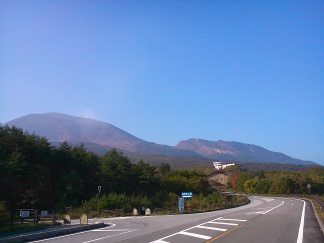 |
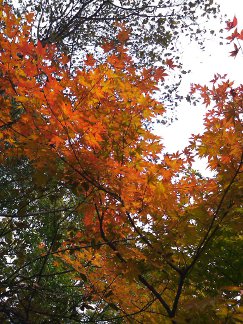 |
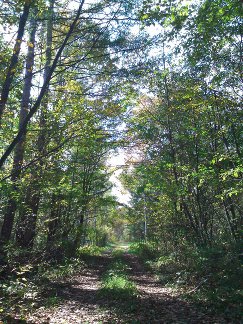 |
I observed 9 comets visually between Oct. 7 and 10 in Kita-karuizawa, Gunma, Japan.
The weather had been fine during the weekend with a holiday. I went to Gunma to see Giacobinids meteor shower outburst once per 13 years. The temperature got down to almost 0 Celsius. The trees are turning yellow and red day by day.
On the day of Giacobinids outburst, it had been cloudy from evening to midnight. But the clouds disappeared around the moon set, and the weather became fine. I detected 7 meteors of Giacobinids between 2 mag and 3 mag during 40 minutes between 3:30 and 4:55 JST (HR=10.5), including a meteor seen for 5 seconds. Finally, Jupiter-class bright ISS passed over the sky around 4:55 JST.
I also observed a bright supernova 2011fe in the Pinwheel Galaxy M101. It has already passed one month and a half after the discovery, but it is bright at 11.2 mag still now. But unfortunately, the host galaxy was not visible at all due to the strong moonlight. So it does not look like a supernova.
I also observed Mira. It was 2.7 mag, remarkably bright in Cetus. The orange color is clearly visible with naked eyes.
C/2009 P1 ( Garradd )
Oct. 7 7.9 mag Dia. 5.8' DC 7 (40.0-cm reflector 36x)
Oct. 7 6.8 mag Dia. 12' DC 6-7 (10x70 monocular)
Oct. 10 6.9 mag Dia. 12' DC 5-6 (10x70 monocular)
Oct. 10 7.5 mag Dia. 6' DC 7 (40.0-cm reflector 36x)
Bright and large. Well condensed and easy to see even with a strong moonlight.
C/2010 G2 ( Hill )
Oct. 7 10.5 mag Dia. 5.2' DC 3 (40.0-cm reflector 36x)
Oct. 8 10.7 mag Dia. 6.6' DC 2 (40.0-cm reflector 36x)
Bright and large! The condensation is unexpectedly weak. It looks diffuse, but easy to see. It is DC=4 with higher magnification (75x).
P/2010 JC81 ( WISE )
Oct. 7 fainter than 13.5 mag Dia. 0.4' (40.0-cm reflector 257x)
Not visible.
C/2010 S1 ( LINEAR )
Oct. 7 14.3 mag Dia. 0.3' DC 6 (40.0-cm reflector 257x)
It looks soft, although I had imagined that it would look almost stellar.
C/2010 X1 ( Elenin )
Oct. 7 fainter than 10.0 mag Dia. 2.2' (40.0-cm reflector 144x)
Oct. 8 fainter than 10.9 mag Dia. 1.5' (40.0-cm reflector 144x)
This comet had been disintegrated until mid September. Now it is appearing in the morning sky after a long time blank. I found nothing at the predicted position. But the condition to see a diffuse object was poor, the background sky was bright due to the low altitude. A 13.2-mag star was visible.
C/2011 A3 ( Gibbs )
Oct. 7 fainter than 10.4 mag Dia. 1.2' (40.0-cm reflector 144x)
Some visual observers reported that it is a 10-mag large diffuse comet. But I could not see the comet. The background sky was bright due to the strong moonlight.
45P/Honda-Mrkos-Pajdusakova
Oct. 7 8.0 mag Dia. 1.9' DC 8 (40.0-cm reflector 36x)
Oct. 8 8.0 mag Dia. 3.5' DC 7-8 (40.0-cm reflector 36x)
Intensely bright! Shining like a bright star!
On Oct. 8, I felt that the comet became soft and wide than the previous day, maybe because I observed it at the higher altitude.
49P/Arend-Rigaux
Oct. 7 12.9 mag Dia. 1.4' DC 4 (40.0-cm reflector 144x)
Oct. 8 12.9 mag Dia. 1.1' DC 5 (40.0-cm reflector 144x)
I was surprised because it was unexpectedly bright.
78P/Gehrels 2
Oct. 7 11.5 mag Dia. 1.8' DC 5 (40.0-cm reflector 75x)
Bright and easy to see after the moonset. Moderately condensed.
|
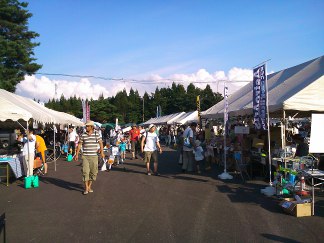 |
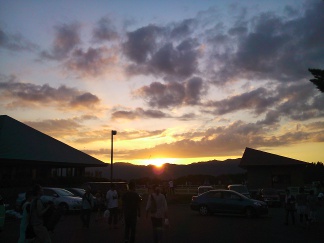 |
I observed C/2009 P1 on Aug. 27 in Niigata, Japan.
I participated in Tainai Star Party in Niigata Prefecture. I enjoyed the star party with a fine weather. I observed a bright comet C/2009 P1 using one of the telescopes in the party.
C/2009 P1 ( Garradd )
8.3 mag Dia. 3' DC 7 (20.0T 80x)
The central part is very bright and strongly condensed, surrounded with a large faint outer coma.
My estimation became fainter due to the light in the star party and the high magnification.
|
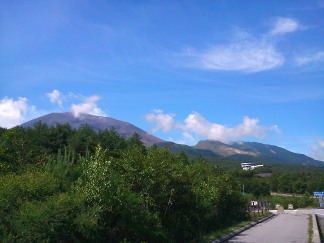 |
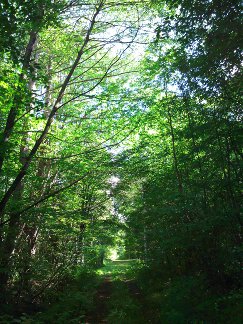 |
I observed 4 comets visually on Aug. 9 in Kita-karuizawa, Gunma, Japan.
Heavy shower with thunder almost every evening, but it becomes clearly fine in the morning. On Aug. 9, it was completely cloudy until midnight, but clouds suddenly went away and the sky became fine after 2:30. But it was humid and the sky was not so clear.
Jupiter with two bands was excellent. I found many Perseid meteors.
C/2009 P1 ( Garradd )
8.5 mag Dia. 4.2' DC 7-8 (40.0-cm reflector 36x)
Very strongly condensed. The coma looks compact.
C/2009 Y1 ( Catalina )
about 13.6 mag Dia. 0.6' DC 6 (40.0-cm reflector 144x)
Hard to observe due to the poor sky condition.
C/2011 L3 ( McNaught )
fainter than 12.2 mag Dia. 0.7' (40.0-cm reflector 144x)
Not visible due to the poor sky condition. It located near by Albireo and I enjoyed the colorful binary.
213P/Van Ness
about 12.4 mag Dia. 1.1' DC 3 (40.0-cm reflector 144x)
I could observe it again since 2005. Disturbed by a bright 3.7-mag star, gamma Psc, in the same field.
![]()
|
Go to Seiichi Yoshida's Diary of Comet Observations in 2010. |
![]()